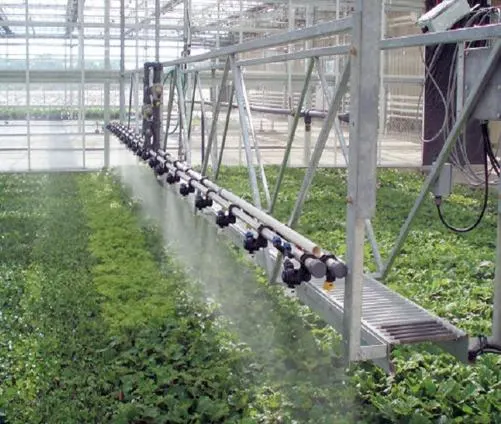- Overview
- Product Description
- Company Profile
Basic Info.
Product Description
The agricultural sector has undergone numerous improvements in recent years that have led to the proliferation of new techniques for all types of crops. And one of the areas that has received the greatest advances is irrigation, which has new systems that are much more efficient and sustainable. This is the case, for example, the mist or fog irrigation system.
Misting is one of the most widely used irrigation mechanisms nowadays, especially in greenhouses. It is so called because the water is sprayed out in the form of a mist by means of micro-sprinkler belts placed on top of the crops. This produces a fog-like sensation thanks to the layers of very fine droplets emitted at a pressure of between 3 and 5 bar.
Unlike more conventional techniques like sprinkler irrigation, fog irrigation applies a more efficient drip, is more easily adapted to all soils and is less labour intensive. Its installation is very simple. It consists of flexible polyethylene strips with micro-perforations that are secured to the floor by pins.

Thanks to the size of the droplets and the uniformity of this system, the benefits and advantages of fog irrigation are multiple. Its main advantages over other systems are:
Uniformity. The water is sprayed through small perforations on the strips, which ensures that it is spread more evenly over the entire crop.
No crop damage. Another advantage of mist irrigation is that it avoids direct impact of water on crops or plants. Which results in a higher utilisation and production.
More sustainable. Fog irrigation, as it is more uniform, avoids the generation of puddles. In this way, the depth can be better controlled as irrigation is always superficial, which avoids leaching. Fully recyclable. Facilitates proper waste management as all materials are recyclable.
More versatile. The fog irrigation system works at a pressure of about 2 kg, lower than the sprinkler system. This makes it suitable for all types of farms.
All of the above advantages contribute to reducing irrigation time by half. For example, in a crop that would require 60 minutes for a complete cycle with sprinkler irrigation, with misting this time is reduced to 20-30 minutes.








